by An Ard Rí, Scott Mehl, and Susan Flantzer
© Unofficial Royalty 2019
All portraits and photos are from Wikipedia unless otherwise noted.

The Royal Seat of San Lorenzo de El Escorial
The Royal Seat of San Lorenzo de El Escorial was built by King Philip II of Spain for several purposes, one being the final resting place of the Kings of Spain. The complex includes a palace, basilica, monastery, and library. The Royal Crypt is located beneath the basilica and the convent. There are two separate Pantheons containing the remains. The Pantheon of Kings contains the remains of Kings and Queen Consorts who were also mothers of Kings of Spain. The Pantheon of Infantes is the resting place of other members of the Spanish Royal Family. Initially, the remains are taken to one of two decaying chambers (pudridero), where they are placed into a leaden urn and remain for 20 to 30 years. These urns are then interred into the marble sepulchers, or tombs, in either the Pantheon of Kings or the Pantheon of Infantes.
********************
The Pantheon of Kings
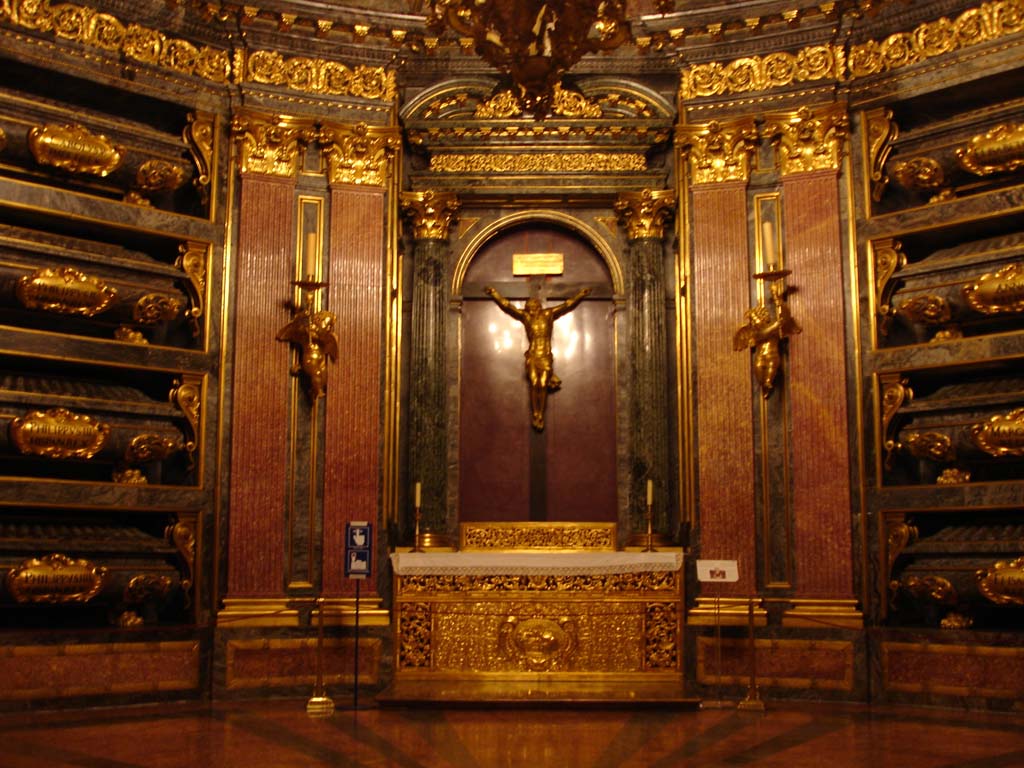
The altar inside the Pantheon of Kings

The layout of the Pantheon of Kings: The two empty sepulchers 25 and 26 will be used by Don Juan, Count of Barcelona and Maria Mercedes of Two-Sicilies, parents of King Juan Carlos; Source: https://i0.wp.com/upload.wikimedia.org/wikipedia/commons/thumb/2/27/La_Cripta-Ubicacion_de_las_urnas.jpg/670px-La_Cripta-Ubicacion_de_las_urnas.jpg?resize=625%2C559
The Pantheon of Kings is located beneath the Basilica and consists of 26 marble sepulchers containing the remains of the Kings and Queens of Spain. As seen in the layout above, it is octagonally shaped, with the sepulchers stacked in six columns around the room. An additional two sepulchers are located above the entrance. The Kings’ tombs are all on one side, while the Queens’ tombs are on the other.
King Juan Carlos made exceptions for the final resting place of his parents. Although his father did not reign, Juan, Count of Barcelona was the heir apparent of his father King Alfonso XIII because both of his elder brothers renounced their rights of succession. When Alfonso XIII, who had lost his throne when the Second Spanish Republic was declared in 1931, knew that his life was coming to an end, he formally abdicated in favor of his son Juan, who became the pretender to the Spanish throne. The dictator Francisco Franco declared that the monarchy would be restored upon his own death. However, Franco felt that Juan would be too liberal, so he passed over him and chose Juan’s son, Juan Carlos, as heir to the Spanish throne. Although Juan, Count of Barcelona never reigned, he is considered a de jure king and he and his wife are parents of a king.
The remains of King Alfonso XIII’s third son Juan, Count of Barcelona and daughter-in-law Maria de las Mercedes (the father and mother of the former King Juan Carlos I), lie in the pudridero, awaiting interment in the Pantheon of the Kings. When these remains are interred, all the sepulchers in the Pantheon of Kings will be filled. There have also been two Queen Consorts interred in the Pantheon of Kings who were not mothers of kings. No decision has been announced as to the final resting place of former King Juan Carlos I and his wife Queen Sofía or King Felipe VI and Queen Letizia, the present king and queen.
********************
The Pantheon of Infantes

The Pantheon of Infantes is a series of chambers housing the tombs of Infantes, Infantas, and Queen Consorts who were not the mothers of a future King. One of the chambers has a large white marble tomb shaped ‘like a birthday cake’. This structure was completed in 1888 and has niches for 60 tombs. This was originally used for young children who had not yet had their First Communion before they died. Elsewhere in the chambers are tombs of different shapes and styles, all in white marble. The Pantheon of Infantes has its own pudridero (decaying chamber) where the remains of the deceased stay for 20 to 30 years and then be interred.
********************
All pictures/photos of members of the Spanish Royal Family are from Wikipedia unless otherwise indicated. Since all but a few of the Spanish royals below are buried in the Pantheon of Kings or the Pantheon of Infantes at the Royal Crypt of the Monastery of El Escorial, the link is directly below and will not be listed in each entry.
- Carlos I: reigned March 14, 1516 – January 16, 1556, abdicated
- Felipe II: reigned January 16, 1556 – September 13, 1598
- Felipe III: reigned September 13, 1598 – March 31, 1621
- Felipe IV reigned March 31, 1621 – September 17, 1665
- Carlos II: reigned September 17, 1665 – November 1, 1700
********************
Carlos I, King of Spain, reigned May 14, 1516 – January 16, 1556
Holy Roman Emperor Charles V, reigned June 28, 1519 – August 27, 1556
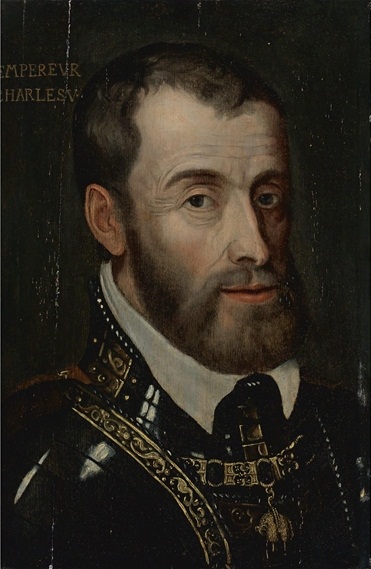
Born February 24, 1500, Carlos I was the eldest son of Juana I, Queen of Castile and Philip of Austria. In 1506, he inherited Burgundy following his father’s death. Charles co-reigned Spain with his mother Juana I. From 1520 onwards, Carlos had his mother confined at the Convent of Santa Clara in Tordesillas until her death in 1555. Carlos was elected Holy Roman Emperor in June 1519.
King Carlos I abdicated in favor of his son Philip II. He died of malaria on September 21, 1558 at the Monastery of Yuste where he had lived for several years. His remains are buried in the Pantheon of Kings in the Royal Crypt of the Monastery of El Escorial.
Isabella of Portugal, Queen of Spain

Isabella was the daughter of King Manuel I of Portugal and Maria of Castile and Aragon. In March 1526, she married Carlos I of Spain. She acted as Regent of Spain during her husband’s long absences 1529–1532 and again 1535-1539. Isabella was also the mother of King Felipe II of Spain.
Queen Isabella died in childbirth on May 1, 1539, at the Fuensalida Palace in Toledo, Spain. Her remains were initially buried at the Chapel Royal of Granada but were later moved to the Pantheon of Kings in the Royal Crypt of the Monastery of El Escorial.
********************
Felipe II, King of Spain, reigned January 16, 1556 – September 13, 1598
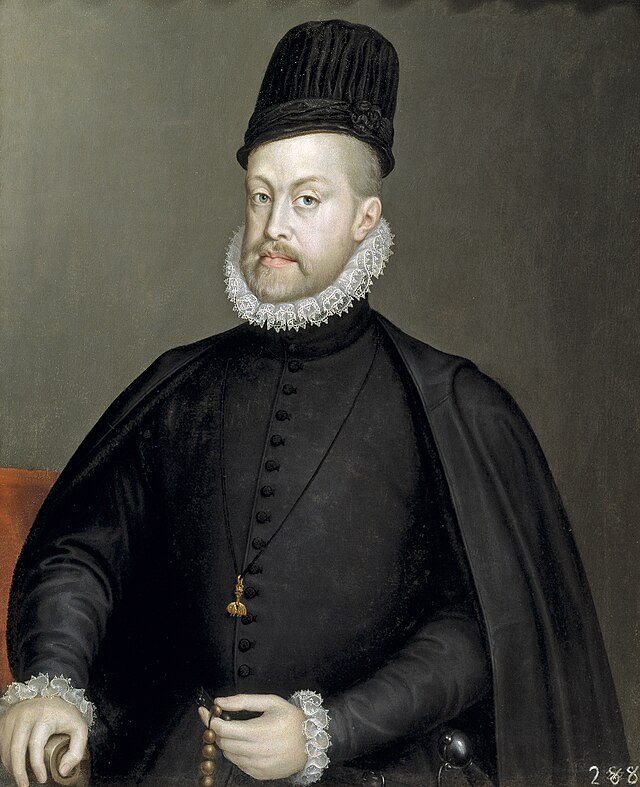
Felipe II was the son of King Carlos I of Spain and Isabella of Portugal. He became King of Naples in July 1554, and King of Spain in 1556 following his father’s abdication. He married four times and all of his wives predeceased him.
Felipe II died in Madrid on September 13, 1598, after a long illness. His remains are buried in the Pantheon of Kings in the Royal Crypt of the Monastery of El Escorial.
Infanta Maria Manuela of Portugal, Princess of Asturias
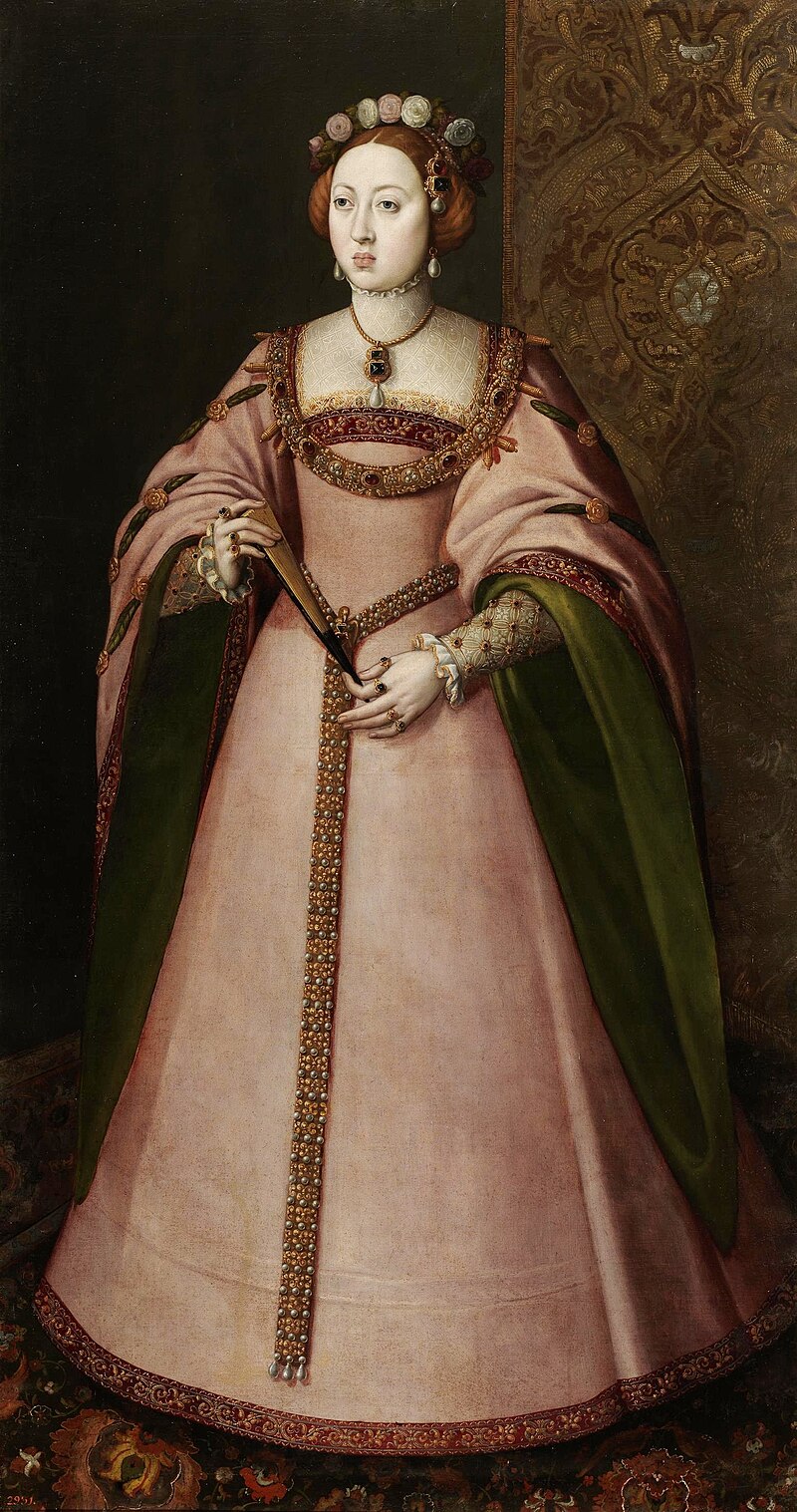
Maria was the daughter of King John III of Portugal and Catherine of Austria. She married the future Felipe II on November 12, 1543, and was the mother of Don Carlos, Prince of Asturias.
Maria died soon after the birth of Carlos, Prince of Asturias at Valladolid, Spain. Her remains are buried in the Pantheon of Princes in the Royal Crypt of the Monastery of El Escorial.
Queen Mary I of England and Ireland

Mary was the second wife of Felipe II of Spain before he became king. Better known as ‘Bloody Mary’, she was born February 18, 1516, the only surviving child of King Henry VIII of England and Catherine of Aragon. In 1553, Mary succeeded her half-brother, King Edward VI on the throne of England.
Mary I died at St. James’ Palace on November 17, 1558. She is buried in Westminster Abbey. Her tomb is actually beneath that of her half-sister Queen Elizabeth I of England. The monument containing the tombs is only for Elizabeth I, with Mary only mentioned in one of the transcriptions on the base – “Partners both in throne and grave, here rest we two sisters, Elizabeth and Mary, in the hope of the Resurrection”.
Unofficial Royalty: Westminster Abbey
Elisabeth of Valois, Queen of Spain

Elisabeth de Valois was the eldest daughter of King Henri II of France and Catherine de Médici. In July 1559, she married King Felipe II of Spain as part of a Franco-Spanish Alliance.
Elisabeth died on October 3, 1568, giving birth to a daughter, who also died. Her remains are buried in the Pantheon of Infantes in the Royal Crypt of the Monastery of El Escorial.
Anna of Austria, Queen of Spain

Anna of Austria was the eldest daughter of Holy Roman Emperor Maximilian II and Maria of Spain. In May 1570, she married her uncle Felipe II of Spain. The future Felipe III was their son.
Anna died on October 26, 1580, following the birth of her daughter Maria of Spain. Her remains are buried in the Pantheon of Kings in the Royal Crypt of the Monastery of El Escorial.
********************
Felipe III, King of Spain and Portugal, reigned September 13, 1598 – March 31, 1621

Felipe III was the son of Felipe II and Anna of Austria. He succeeded his father in September 1598 and married Archduchess Margaret of Austria.
Felipe III died in Madrid on March 31, 1621. His remains are buried in the Pantheon of Kings in the Royal Crypt at the Monastery of El Escorial.
Archduchess Margaret of Austria, Queen of Spain
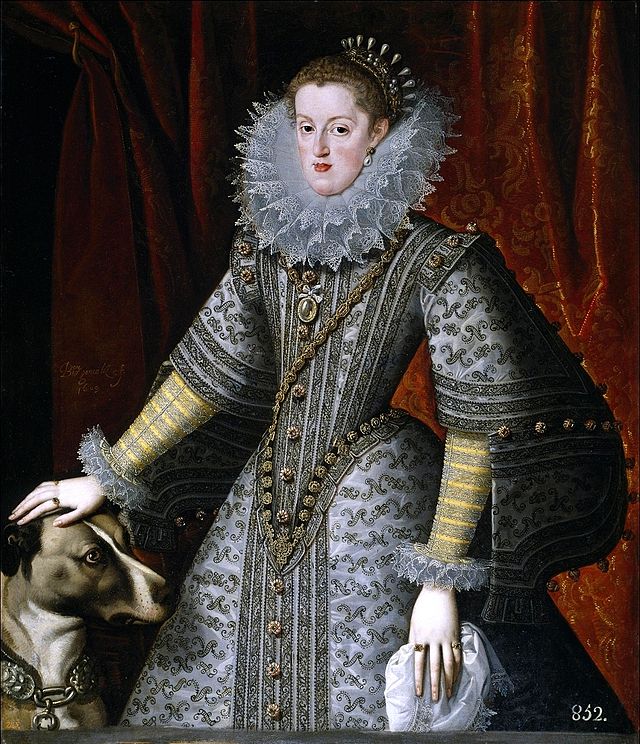
Archduchess Margaret was the daughter of Charles II, Archduke of Austria and Maria Anna of Bavaria. On April 18, 1599, she married Felipe III of Spain.
Margaret died on October 3, 1611, while giving birth to her son Alfonso. She was just 26 years old. Her remains are buried in the Pantheon of Kings in the Royal Crypt of the Monastery of El Escorial.
********************
Felipe IV, King of Spain, reigned March 31, 1621 – September 17, 1665
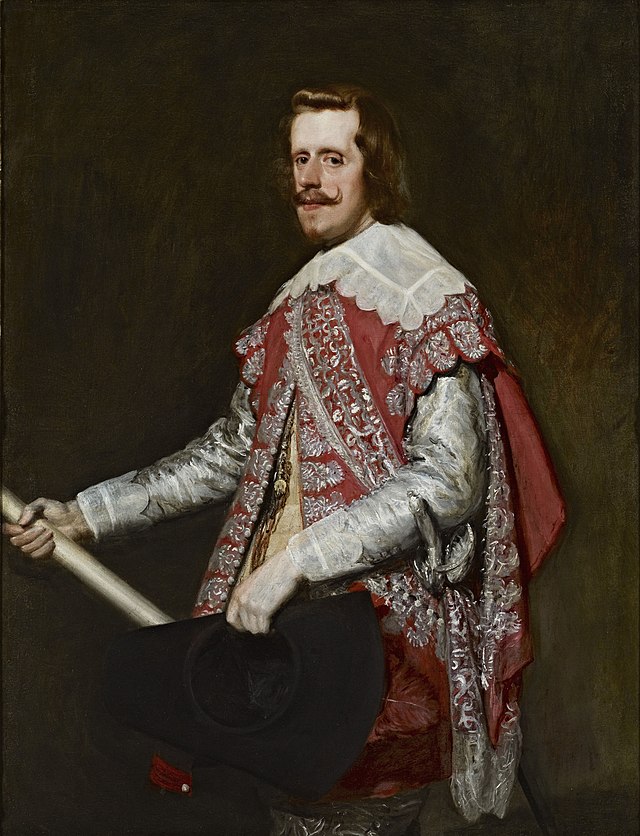
The son of Felipe III and Margaret of Austria, he was born on April 8, 1605, at Valladolid, Spain. In 1615 he was married to Elisabeth of France and he succeeded his father in March 1621. He later remarried, in 1649, to Maria Anna of Austria.
Felipe IV died on September 17, 1665, in Madrid, Spain. His remains are buried in the Pantheon of Kings in the Royal Crypt of the Monastery of El Escorial.
Elisabeth of France, Madame Royale, Queen of Spain

Élisabeth was born in November 1602, the eldest daughter of King Henri IV of France and Marie de Medici. In 1615 she married the future King Felipe IV of Spain, taking on the Spanish version of her name, Isabel.
Queen Isabel died on October 6, 1644, aged 41, at the Royal Alcázar in Madrid. Her remains are buried in the Pantheon of Kings in the Royal Crypt of the Monastery of El Escorial.
Mariana of Austria, Queen of Spain

Mariana of Austria was the second wife of Felipe IV of Spain, and the mother of Carlos II. Following Philip’s death, she acted as Regent of Spain for her son.
Mariana died of breast cancer on May 16, 1696, at the Uceda Palace in Madrid. Her remains are buried in the Pantheon of Kings in the Royal Crypt of the Monastery of El Escorial.
********************
Carlos II, King of Spain, reigned September 17, 1665 – November 1, 1700

Carlos II was the son of Felipe IV and his second wife, Mariana of Austria. He was born on November 6, 1661. Carlos became King of Spain upon his father’s death in 1665. However, as he was a minor, his mother Mariana of Austria was appointed Regent until he reached adulthood.
Carlos II, the last Hapsburg King of Spain, died childless in November 1700. His remains are buried in the Pantheon of Kings in the Royal Crypt of the Monastery of El Escorial.
Marie Louise of Orléans, Queen of Spain

Marie Louise was born on March 26, 1662, the eldest daughter of Philippe of France, Duke of Orléans and Princess Henrietta Anne of England, daughter of King Charles I of England. In 1679 she married Carlos II of Spain.
Marie Louise died at the Royal Alcázar of Madrid, on February 12, 1689. As she was not the mother of a King, her remains are buried in the Pantheon of Infantes in the Royal Crypt of the Monastery of El Escorial.
Maria Anna of Neuburg, Queen of Spain

Maria Anna of Neuburg was a daughter of Philip Wilhelm, Elector of the Palatinate and Elisabeth Amalie of Hesse-Darmstadt. In August 1689 she married Carlos II of Spain. The union proved to be childless.
Maria Anna died at the Infantado Palace in Guadalajara, Spain on July 16, 1740, aged 72. Her remains are buried in the Pantheon of Infantes in the Royal Crypt of the Monastery of El Escorial.
********************
This article is the intellectual property of Unofficial Royalty and is NOT TO BE COPIED, EDITED, OR POSTED IN ANY FORM ON ANOTHER WEBSITE under any circumstances. It is permissible to use a link that directs to Unofficial Royalty.
